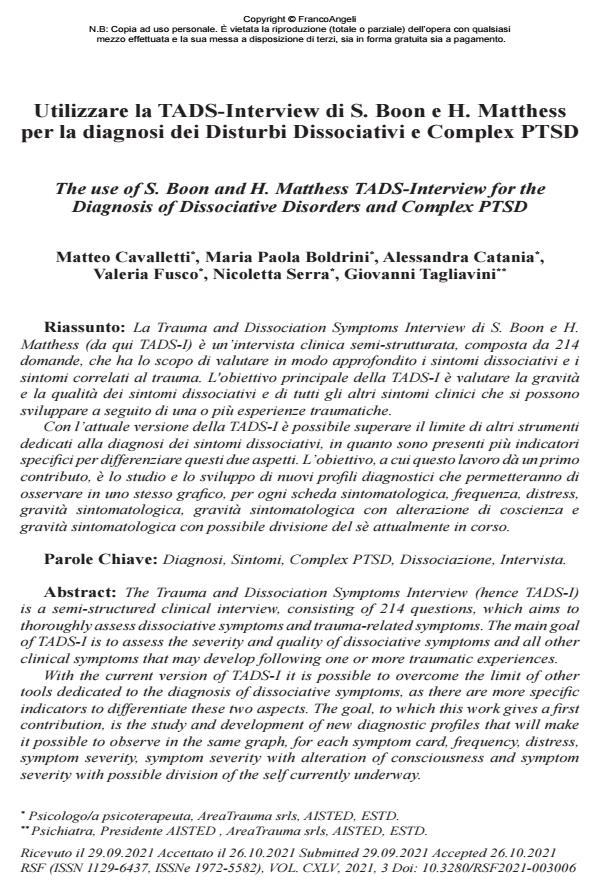The use of S. Boon and H. Matthess TADS-Interview for the Diagnosis of Dissociative Disorders and Complex PTSD
Journal title RIVISTA SPERIMENTALE DI FRENIATRIA
Author/s Matteo Cavalletti, Maria Paola Boldrini, Alessandra Catania, Valeria Fusco, Nicoletta Serra, Giovanni Tagliavini
Publishing Year 2021 Issue 2021/3
Language Italian Pages 13 P. 79-91 File size 179 KB
DOI 10.3280/RSF2021-003006
DOI is like a bar code for intellectual property: to have more infomation
click here
Below, you can see the article first page
If you want to buy this article in PDF format, you can do it, following the instructions to buy download credits

FrancoAngeli is member of Publishers International Linking Association, Inc (PILA), a not-for-profit association which run the CrossRef service enabling links to and from online scholarly content.
The Trauma and Dissociation Symptoms Interview (hence TADS-I) is a semi-structured clinical interview, consisting of 214 questions, which aims to thoroughly assess dissociative symptoms and trauma-related symptoms. The main goal of TADS-I is to assess the severity and quality of dissociative symptoms and all other clinical symptoms that may develop following one or more traumatic experiences. With the current version of TADS-I it is possible to overcome the limit of other tools dedicated to the diagnosis of dissociative symptoms, as there are more specific indicators to differentiate these two aspects. The goal, to which this work gives a first contribution, is the study and development of new diagnostic profiles that will make it possible to observe in the same graph, for each symptom card, frequency, distress, symptom severity, symptom severity with alteration of consciousness and symptom severity with possible division of the self currently underway.
Keywords: Diagnosis, Symptoms, Complex PTSD, Dissociation, Interview
Matteo Cavalletti, Maria Paola Boldrini, Alessandra Catania, Valeria Fusco, Nicoletta Serra, Giovanni Tagliavini, Utilizzare la TADS-Interview di S. Boon e H. Matthess per la diagnosi dei Disturbi Dissociativi e Complex PTSD in "RIVISTA SPERIMENTALE DI FRENIATRIA" 3/2021, pp 79-91, DOI: 10.3280/RSF2021-003006